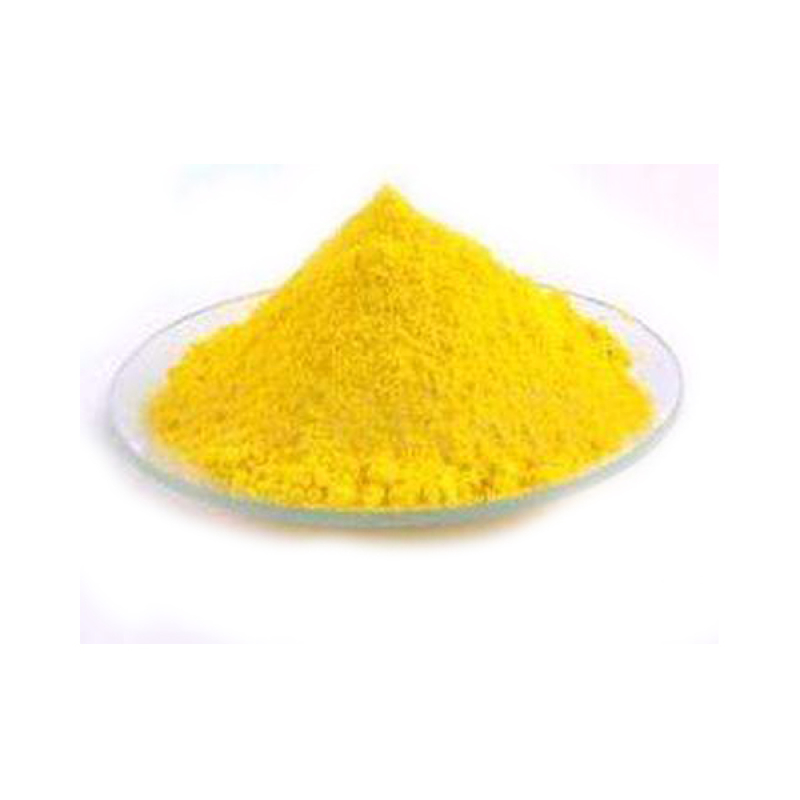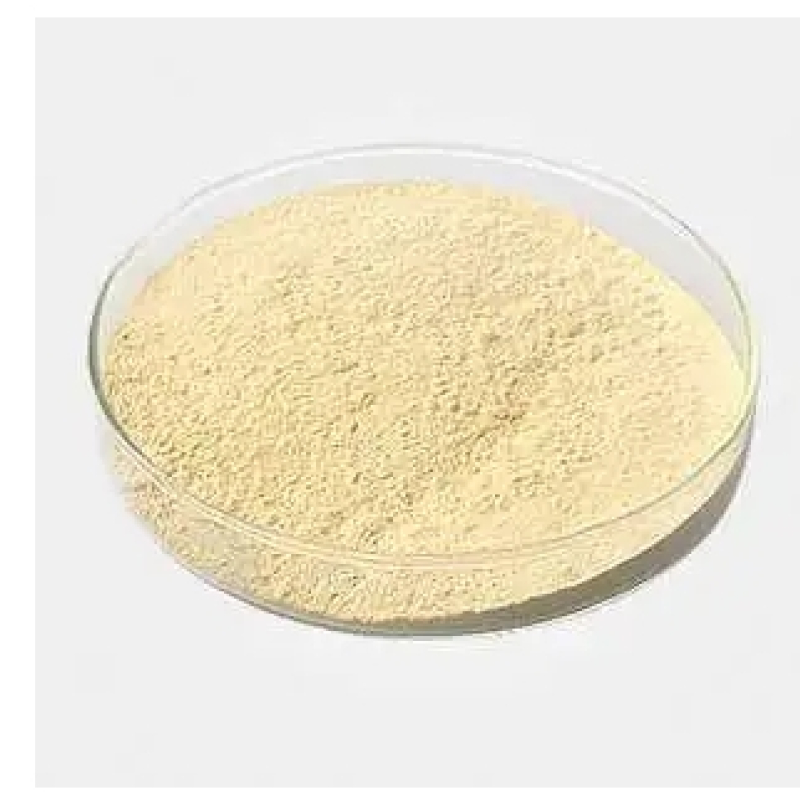Products Description of 2-Methoxy-5-pyridineboronic acid CAS#163105-89-32-Methoxy-5-pyridineboronic acid, an organic chemical substance, molecular formula: C6H8BNO3.2-Methoxy-5-pyridineboronic acid Chemical PropertiesMelting point 135-140 °C(lit.)Boiling point 313.2±52.0 °C(Predicted)density 1.24±0.1 g/cm3(Predicted)storage temp. 2-8°Cpka7.26±0.10(Predicted)form powder to crystalcolor White to Almost whiteWater Solubility Soluble in water.BRN 9119950InChIKeyDHADXDMPEUWEAS-UHFFFAOYSA-NCAS DataBase Reference163105-89-3(CAS DataBase Reference)Safe
Contact Now
Products Description of 5-Methoxy-2-Tetralone CAS#32940-15-15-Methoxy-2-tetralinone is a chemical intermediate with a molecular formula of C11H12O2 and a molecular weight of 176.21.5-Methoxy-2-tetralone Chemical PropertiesMelting point 32-36 °C (lit.)Boiling point 165°C/10mmHg(lit.)density 1.124±0.06 g/cm3(Predicted)vapor pressure 0.059Pa at 25℃Fp >230 °Fstorage temp. Keep in dark place,Sealed in dry,Room Temperaturesolubility Chloroform, Dichloromethane, Ethyl Acetate, Methanolform Solidcolor Yellowish OrangeBRN 1451623InChIKeyMDA
Contact Now
Products Description of 2-Methoxy-5-formylpyrimidine is a pyrimidine derivative2-Methoxy-5-formylpyrimidine is a pyrimidine derivative2-METHOXY-PYRIMIDINE-5-CARBALDEHYDE Chemical PropertiesMelting point 94-96 °CBoiling point 281.3±32.0 °C(Predicted)density 1.238±0.06 g/cm3(Predicted)storage temp. under inert gas (nitrogen or Argon) at 2-8°Cform solidpka-0.41±0.22(Predicted)color YellowSafety InformationHazard Codes Xi,XnRisk Statements 22HazardClass IRRITANTHS Code 2933599590Product Application of 2-Methoxy-5-formylpyrimidine is a pyr
Contact Now
Products Description of 5-Methoxy-2-tetralone CAS#32940-15-1Light yellow or light red solid.5-Methoxy-2-tetralone Chemical PropertiesMelting point 32-36 °C (lit.)Boiling point 165°C/10mmHg(lit.)density 1.124±0.06 g/cm3(Predicted)vapor pressure 0.059Pa at 25℃Fp >230 °Fstorage temp. Keep in dark place,Sealed in dry,Room Temperaturesolubility Chloroform, Dichloromethane, Ethyl Acetate, Methanolform Solidcolor Yellowish OrangeBRN 1451623InChIKeyMDAIAXRTLTVEOU-UHFFFAOYSA-NLogP1.8 at 25℃CAS DataBase Reference32940-15-1(CAS DataBase Refer
Contact Now
Products Description of 2-Amino-4-methoxy-6-methylpyrimidine CAS#7749-47-52-Amino-4-methoxy-6-methylpyrimidine Boiling point 255.11°C (rough estimate) Melting point 157.0 to 161.0 deg-C Solubility in methanol: soluble 1%, clear to very slightly hazy, colorless to yellow White crystalline powder2-Amino-4-methoxy-6-methylpyrimidine Chemical PropertiesMelting point 156-158 °C (lit.)Boiling point 255.11°C (rough estimate)density 1.2081 (rough estimate)refractive index 1.6500 (estimate)solubility methanol: soluble1%, clear to very slightly hazy, colorless to yellowform
Contact Now
Products Description of 2-Ethylhexanoic acid CAS#149-57-5 Colorless liquid with slight odor.
Contact Now
Products Description of 5-Methyl-2-Thiophenecarboxylic Acid CAS#1918-79-25-Methyl-2-Thiophenecarboxylic Acid is a colorless, transparent liquid with a melting point of 136-138°C.5-Methyl-2-Thiophenecarboxylic Acid Chemical PropertiesMelting point 135-138 °C(lit.)Boiling point 229.75°C (rough estimate)density 1.365 (estimate)refractive index 1.5300 (estimate)storage temp. 2-8°C(protect from light)pka3.71±0.10(Predicted)form Liquidcolor ClearBRN 113857CAS DataBase Reference1918-79-2(CAS DataBase Reference)NIST Chemistry Reference5-Methyl-2-thioph
Contact Now
Products Description of 5-Bromo-2-pyridinecarboxylic Acid CAS#30766-11-15-Bromo-2-pyridinecarboxylic acid is a chemical substance with the molecular formula C6H3BrNO2.5-Bromo-2-pyridinecarboxylic Acid Chemical PropertiesMelting point 173-175°CBoiling point 319.5±27.0 °C(Predicted)density 1.813±0.06 g/cm3(Predicted)storage temp. Keep in dark place,Sealed in dry,Room Temperaturesolubility Soluble in methanol.form Powderpka3.41±0.10(Predicted)color White to off-whiteInChIKeyMNNQIBXLAHVDDL-UHFFFAOYSA-NCAS DataBase Reference30766-11-1(CAS DataBase Reference)S
Contact Now
Products Description of 5-CHLORO-PYRAZINE-2-CARBOXYLIC ACID CAS#36070-80-15-Chloropyrazine-2-carboxylic acid is a pyrazine compound.CAS No.
Contact Now
Products Description of 1-Methoxy-2-propyl acetate CAS#108-65-6Propylene glycol methyl ether acetate (PGMEA), also called propylene glycol monomethyl ether acetate, has the molecular formula C6H12O3. It is a colorless hygroscopic liquid with a special odor. It is a non-pollution solvent with multiple functional groups. It is mainly used as a solvent for inks, paints, inks, textile dyes, and textile oils. It can also be used as a cleaning agent in the production of LCD displays.
Contact Now
Products Description of Indole-5-Carboxylic Acid CAS#1670-81-1Indole-5-carboxylic acid is a pharmaceutical intermediate.Indole-5-Carboxylic Acid Chemical PropertiesMelting point 211-213 °C (lit.)Boiling point 287.44°C (rough estimate)density 1.2480 (rough estimate)refractive index 1.5050 (estimate)storage temp. Keep in dark place,Sealed in dry,Room Temperaturesolubility Soluble in ethanol (50 mg/ml), dimethyl sulfoxide and methanol.pka4.40±0.30(Predicted)form Powdercolor Light beige to yellowBRN 124391InChIKeyIENZCGNHSIMFJE-UHFFFAOYSA-NCAS Data
Contact Now
Products Description of ISOQUINOLINE-5-CARBOXYLIC ACID CAS#27810-64-6ISOQUINOLINE-5-CARBOXYLIC ACID is a chemical.
Contact Now
Products Description of (R)-(-)-3-Carbamoymethyl-5-methylhexanoic acid CAS#181289-33-8(R)-(-)-3-(Carbamoylmethyl)-5-methylhexanoic acid is solid at room temperature and pressure, soluble in dimethyl sulfoxide, N,N-dimethylformamide and other organic solvents; it has poor solubility in ether solvents and can be used as an intermediate in chiral organic synthesis.
Contact Now
Products Description of 4,5-epoxytetrahydrophthalic acid diglycidylester CAS#25293-64-5Colorless liquid4,5-epoxytetrahydrophthalic acid diglycidylester Chemical PropertiesBoiling point 447.4±45.0 °C(Predicted)density 1.406Factory and Equipment ShowFast delivery timeInventory 2-3 working days New production 7-10 working days
Contact Now
Products Description of 2-Hydroxypropyl-β-cyclodextrinCAS#128446-35-5 Hydroxypropyl-BETA-cyclodextrin is one of the most intensively studied and widely used cyclodextrin derivatives.
Contact Now
Products Description of 5-Chlorothiophene-2-Sulfonamide CAS#53595-66-72-Chlorothiophene-5-sulfonamide is a white powder crystal, which is often used as a pharmaceutical intermediate and pharmaceutical raw material.5-Chlorothiophene-2-Sulfonamide Chemical PropertiesMelting point 113-117 °C(lit.)Boiling point 366.3±52.0 °C(Predicted)density 1.649±0.06 g/cm3(Predicted)storage temp. under inert gas (nitrogen or Argon) at 2–8 °Csolubility soluble in Methanolform powder to crystalpka9.75±0.60(Predicted)color White to Light yellow to GreenCAS DataBase Refe
Contact Now
Products Description of Trimethylsioxysilicate CAS#56275-01-5White powderTrimethylsioxysilicate Chemical PropertiesFp 4°C (39°F)EPA Substance Registry SystemSilicic acid, trimethylsilyl ester (56275-01-5)Safety InformationRisk Statements 11Safety Statements 24/25RIDADR 1993TSCA YesFactory and Equipment ShowFast delivery timeInventory 2-3 working days New production 7-10 working days
Contact Now
Mineral Oil CAS# 8042-47-5Mineral oil is a highly refined petroleum mineral oil consisting of a complex combination of hydrocarbons obtained from the intensive treatment of a petroleum fraction with sulfuric acid and oleum, or by hydrogenation, or by a combination of hydrogenation and acid treatment. Additional washing and treating steps may be included in the processing operation.
Contact Now
Products Description of 2-Bromo-5-nitropyridine CAS#4487-59-62-Bromo-5-nitropyridine is an off-white to pale yellow crystal used in the synthesis of pharmaceutical intermediates. 2-Bromo-5-nitropyridine can be prepared from 2-hydroxy-5-nitropyridine by bromination reaction.
Contact Now
Products Description of Methanedisulphonic acidCAS#503-40-2Methyl disulfonic acid is an important fine chemical product.
Contact Now
Products Description of 2-Bromo-5-hydroxypyrazine CAS#374063-92-02-Hydroxy-5-bromopyrazine is an organic intermediate.2-Bromo-5-hydroxypyrazine Chemical PropertiesMelting point 115-119°Cdensity 2.00±0.1 g/cm3(Predicted)storage temp. Keep in dark place,Sealed in dry,Room Temperaturepka10.02±0.40(Predicted)form Crystalline Powdercolor White to light brownSafety InformationHazard Codes Xi,XnRisk Statements 22-41Safety Statements 26-39WGK Germany 1HS Code 29339900Product Application of 2-Bromo-5-hydroxypyrazine CAS#374063-92-0It has been
Contact Now
Products Description of 2-Thiophenecarboxylic acid CAS#527-72-02-Thiophenecarboxylic acid is a kind of colorless crystal.
Contact Now
Products Description of Dinonylnaphthalenesulfonic acid CAS#25322-17-2Dinonylnaphthalenesulfonic acid is a chemical substance with the molecular formula C28H44O3S.Dinonylnaphthalenesulfonic acid Chemical PropertiesBoiling point 94-99 °Cdensity 0.852 g/mL at 25 °Crefractive index n20/D 1.465Fp 30 °Fstorage temp. 2-8°Csolubility H2O: insolubleCAS DataBase Reference25322-17-2(CAS DataBase Reference)EPA Substance Registry SystemNaphthalenesulfonic acid, dinonyl- (25322-17-2)Safety InformationHazard Codes F,Xn,NRisk Statements&nb
Contact Now
Products Description of 5-Nitrosalicylic acid CAS#96-97-95-Nitrosalicylic acid is a chemical substance with the chemical formula C7H5NO5 and a molecular weight of 183.12.5-Nitrosalicylic acid Chemical PropertiesMelting point 228-230 °C(lit.)Boiling point 316.77°C (rough estimate)density 1,65 g/cm3vapor pressure 0Pa at 25℃refractive index 1.6280 (estimate)storage temp. no restrictions.solubility water: soluble1g in 1475ml(lit.)form LiquidpkapK1:2.12 (25°C)color Clear yellow-beige to orange-brownWater Solubility Soluble in water 1g/1475
Contact Now


































